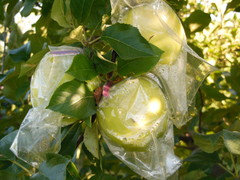Technical question about apple bags
glib
12 years ago
Featured Answer
Comments (41)
ltilton
12 years agonorthwoodswis4
12 years agoRelated Professionals
Danbury Landscape Architects & Landscape Designers · Harrison Landscape Architects & Landscape Designers · Chelmsford Landscape Contractors · Cockeysville Landscape Contractors · El Sobrante Landscape Contractors · Elkridge Landscape Contractors · Ellicott City Landscape Contractors · Inglewood Landscape Contractors · Los Banos Landscape Contractors · New Brighton Landscape Contractors · Painesville Landscape Contractors · Porterville Landscape Contractors · Round Lake Landscape Contractors · Tustin Landscape Contractors · Wethersfield Landscape Contractorsltilton
12 years agomarknmt
12 years agonorthwoodswis4
12 years agomarknmt
12 years agoltilton
12 years agoglib
12 years agoltilton
12 years agonorthwoodswis4
12 years agomyk1
12 years agoglib
12 years agoScott F Smith
12 years agotcstoehr
12 years agoglib
12 years agoltilton
12 years agococonut_head
12 years agodonnieappleseed
12 years agonorthwoodswis4
12 years agoglib
12 years agourbanfarmer7b
12 years agomarknmt
12 years agoTony
12 years agodrnewman6
12 years agoltilton
12 years agoglib
12 years agoquillfred
12 years agodonnieappleseed
11 years agomd_farmer
8 years agospartanapples
8 years agonorthwoodswis4
8 years agoTony
8 years agospeedster1
8 years agoTony
8 years agorphcfb14
8 years agomd_farmer
8 years agospeedster1
8 years agomyk1
8 years agoDarren Gordon
8 years agolast modified: 8 years agospartanapples
8 years ago
Related Stories

ORGANIZINGPre-Storage Checklist: 10 Questions to Ask Yourself Before You Store
Wait, stop. Do you really need to keep that item you’re about to put into storage?
Full Story
REMODELING GUIDESConsidering a Fixer-Upper? 15 Questions to Ask First
Learn about the hidden costs and treasures of older homes to avoid budget surprises and accidentally tossing valuable features
Full Story
WORKING WITH PROS12 Questions Your Interior Designer Should Ask You
The best decorators aren’t dictators — and they’re not mind readers either. To understand your tastes, they need this essential info
Full Story
Design Dilemmas: 5 Questions for Houzzers!
Post Ideas for Landscaping for a Modern Home, Updating a Rental and More
Full Story
EDIBLE GARDENSHow to Add an Apple Tree to Your Edible Garden
Readily available, beautiful and fragrant, apple trees offer four-season interest along with crisp, juicy fruit
Full Story
DECORATING GUIDESCrisp, Fresh: Go for Green Apples
On the Walls or Au Natural, Green Apples Pack a Decorative Bite
Full Story
KITCHEN DESIGNHouzz Call: Tell Us About Your First Kitchen
Great or godforsaken? Ragtag or refined? We want to hear about your younger self’s cooking space
Full Story
GREEN BUILDINGWhat's LEED All About, Anyway?
If you're looking for a sustainable, energy-efficient home, look into LEED certification. Learn about the program and its rating system here
Full Story
FURNITUREHow to Buy a Quality Sofa That Will Last
Learn about foam versus feathers, seat depth, springs, fabric and more for a couch that will work for years to come
Full Story
HEALTHY HOMEWhat You Need to Know About Dust and How to Fight It
Breathe easier with these 10 tips for busting mites, dander and other microscopic undesirables
Full StoryMore Discussions








mrsg47